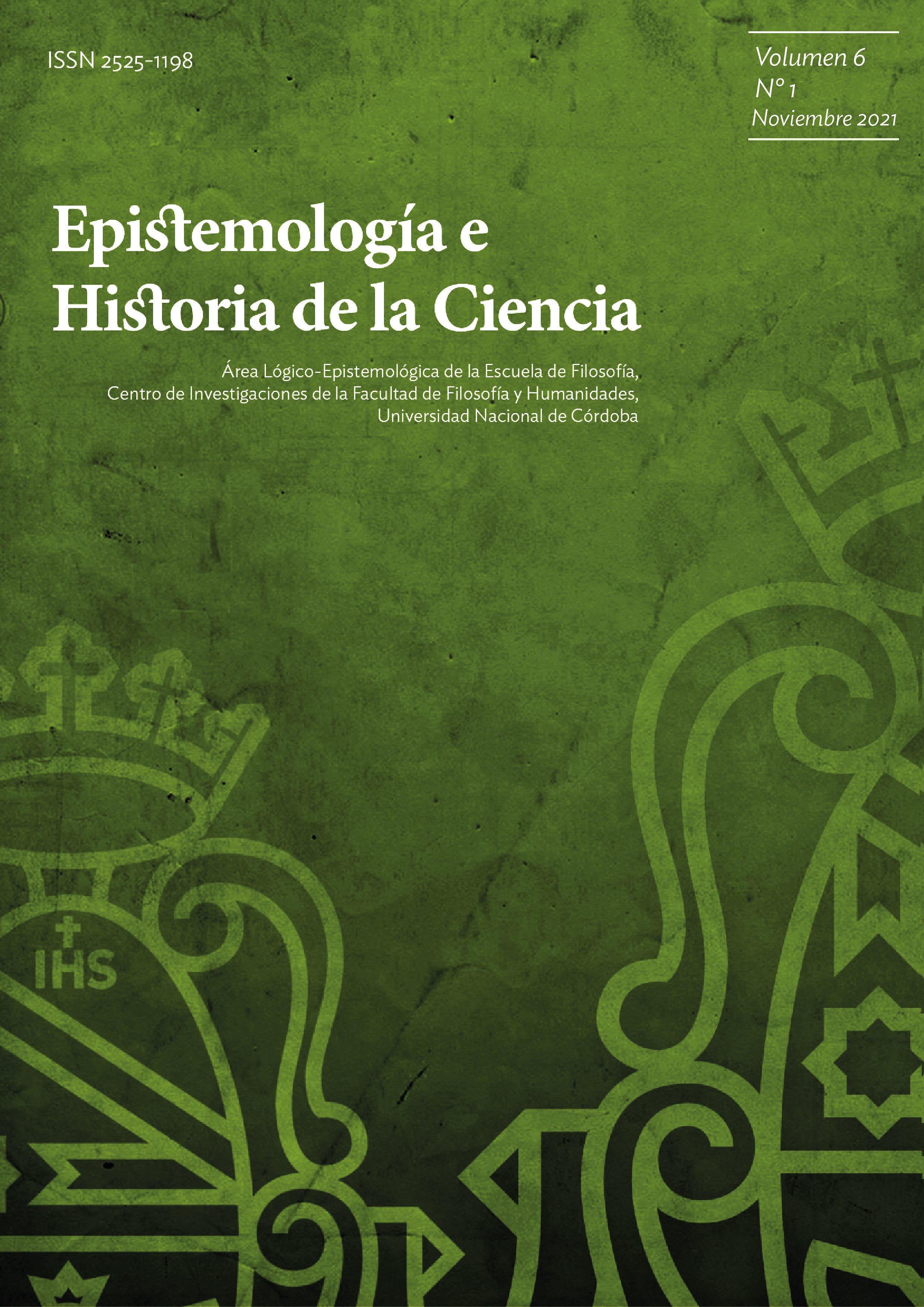Origins of Greek trigonometry: The composition of Ptolemy’s table of chords
Keywords:
Ptolemy, Almagest, Greek trigonometry, history of astronomyAbstract
The article explains in full detail the algorithms proposed by Ptolemy in his Almagest for the composition of the table of chords. This table is the most ancient trigonometric table available in our times.
Downloads
References
Aristarco de Samos. (2020). Acerca de los tamaños y las distancias del Sol y la Luna. (R. Buzón, & C. Carman, Trads.) Barcelona: Universitat de Barcelona Edicions.
Euclides. (1991). Elementos. (M. L. Puerta Castaños, Trad.) Madrid: Gredos.
Neugebauer, O. (1975). A History of Ancient Mathematical Astronomy (Vol. I). Berlin-Heidelberg: Springer-Verlag.
Pedersen, O. (2010). A Survey of the Almagest: with annotation and new commentary by Alexander Jones. (A. Jones, Ed.) New York: Springer.
Ptolemy, C. (1984). Almagest. En G. Toomer, Ptolemy´s Almagest (G. Toomer, Trad., pp. 27-659). Princeton: Princeton University Press.
Ptolomeo, C. (1898-1903). Syntaxis Mathematica (J. L. Heiberg, Ed.). Leipzig: Teubner.
Recio, G. L. (2018). La longitud lunar en el Almagesto de Ptolomeo: el primer modelo. Epistemología e Historia de la Ciencia, 3(1), 32-60.
Van Brummelen, G. (2009). The Mathematics of the Heavens and the Earth: The Early History of Trigonometry. Princeton, New Jersey: Princeton University Press.
Downloads
Published
How to Cite
Issue
Section
License
Copyright (c) 2021 Epistemología e Historia de la Ciencia

This work is licensed under a Creative Commons Attribution-NonCommercial-NoDerivatives 4.0 International License.
En todos los lugares donde aplique, esta obra está bajo una licencia Creative Commons Reconocimiento-NoComercial-SinObrasDerivadas 4.0 .
- Los autores/as conservarán sus derechos de autor y garantizarán a la revista el derecho de primera publicación de su obra, el cual estará simultáneamente sujeto a la Licencia de reconocimiento de Creative Commons que permite a terceros compartir la obra, siempre que se indique su autor y su primera publicación en esta revista.
- Los autores/as podrán adoptar otros acuerdos de licencia no exclusiva de distribución de la versión de la obra publicada (p. ej.: depositarla en un archivo digital institucional o publicarla en un volumen monográfico), siempre que se indique la publicación inicial en esta revista.
- Se permite y recomienda a los autores/as difundir su obra a través de Internet (p. ej.: en archivos digitales institucionales o en su página web) antes y durante el proceso de envío.
- Las licencias de las imágenes de terceros incluidas en los artículos pueden estar sujetas a otros términos; los autores/as son responsables de asegurar la veracidad de su origen, la información de la fuente original provista y su permiso de reproducción en esta publicación, que puede ser exclusivo.














